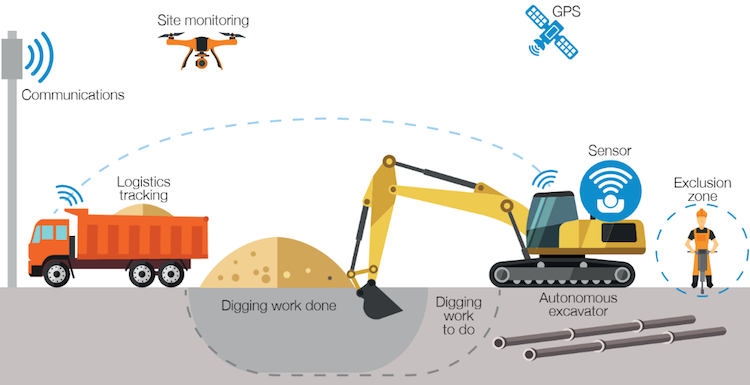
Those who specify connected and automated plant (CAP) during construction can now use a PAS from BSI.
PAS 1892:2023 reguards the definition and specific use of CAP in construction and maintenance works for the purposes of procurement and deployment.
This PAS provides a framework to enable appointing and lead appointed parties to create a common specification, which they can provide to appointed parties, allowing organisations to:
- understand and define needs for CAP in construction and maintenance works based upon a set of strategic and technical objectives;
- define the required capabilities for CAP based upon these needs;
- use a common language for defining CAP capabilities; and
- have a clear approach for defining responsibilities for the safe operation of CAP.
PAS 1892 also has some broader strategic aims including increasing the adoption of CAP, creating a culture of sharing lessons learnt and continuous improvement in the use of CAP systems.
The BSI emphasises that PAS 1892 uses the term “automated” rather than adopting the term “autonomous” to provide consistency with existing legislation, such as the Automated and Electric Vehicles Act 2018. This is also consistent with the PAS 188X series of standards for connected and automated vehicles.
The avoidance of the term “autonomous” is consistent with the fact the term is recognised in law as bestowing its possessor with the fundamental building blocks for human rights, which is inappropriate for a machine.
Among those on the steering group that drafted PAS 1892 were:
- Blackwell Earthmoving;
- Centre for Connected and Autonomous Vehicles;
- Costain;
- the Department for Transport;
- Flannery Plant;
- the Health and Safety Executive;
- the Infrastructure and Projects Authority;
- JCB;
- National Highways;
- Network Rail; and
- WSP.
Don’t miss out on BIM and digital construction news: sign up to receive the BIMplus newsletter.












